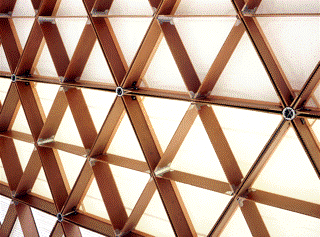
Although grid shells have become a viable structural form in the past few years, their constructability remains an obstacle. While the final form of the grid shell is derived through dynamic relaxation or finite element methods, the actual construction of the grid shell can be very difficult due to the nodal connections. In the past, steel grid shells have utilized welding to attain the necessary nodal stiffness, while in dual layer timber grid shells, the scaffolds were lowered very gradually to lock the lathes into their final shape. Stiffness of non-welded connections was often an issue as they are not as precise as welded connections. However, structural engineering firms, like Buro Happold, have recently used CNC technology to create custom connections for each node to improve the fit of the gridshell connections, while also removing the need for welding on site. Single layer timber grid shells, like the Scunthorpe grid shell, utilize this technology to create grid nodes of the necessary stiffness that are easy to install.
I am interested in performing a case study of the Scunthorpe grid shell to research the types of new joints being used and their structural and economic limitations. I plan on using Finite Element Analysis and potential lab testing to analyze critical nodes of the structure with its current joint system. I will also evaluate the use of a different type of single-layer timber grid shell node to determine which node is more structurally and economically efficient. This evaluation of two types of timber grid shell nodes may also be able to extend to use in bamboo structures in addition to timber and glulam structures.

